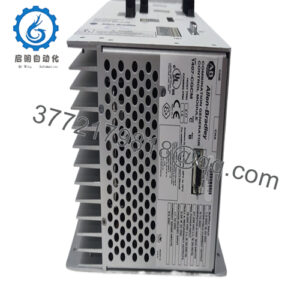Description
In the mission-critical landscape of embedded control systems, where computational bottlenecks or interface lags can compromise real-time decision-making—think a turbine governor in a power plant where delayed PID executions lead to frequency excursions and grid penalties, or a naval radar array where VMEbus stalls amid multi-processor handoffs disrupt tracking loops, risking operational voids—these frailties undermine system cohesion and escalate fault recovery in process control environments. Engineers grappling with distributed architectures often encounter VME-based setups where legacy CPUs falter under data-intensive tasks, spawning memory overflows, I/O desyncs, or expansion limits that prolong commissioning and inflate lifecycle costs in high-reliability industrial automation. The GE VMIVME-7750 VMIVME-7750-746001 350-027750-746001 P counters this as a high-performance Pentium III single-board computer (SBC) from GE Fanuc’s (now Abaco Systems) VMIC VMEbus series, delivering robust processing and versatile I/O bridging to orchestrate complex algorithms and peripheral integrations with unwavering signal reliability.
This board emerges as a linchpin in VME-centric applications, such as modernizing legacy chassis for SCADA extensions, where single-slot efficiency enables denser node deployments without rack sprawl, or in aerospace simulators demanding concurrent multitasking for sensor fusion without latency spikes. In a steel mill’s rolling control, for instance, it crunches torque vectors from encoders under vibrational duress, ensuring high-fidelity outputs that synchronize stands and avert strip defects. For offshore wind SCADA nodes exposed to saline EMI, the GE VMIVME-7750 VMIVME-7750-746001 350-027750-746001 P leverages its Universe II bridge for seamless VME-PCI handoffs, fortifying process stability in isolated nets. It’s vital for scalable builds in multi-CPU VME crates, where its SODIMM expandability and PMC site bridge to FPGAs or Ethernet, aligning with goals of modular diagnostics in dusty or thermal-stressed enclosures.
Tailored to the engineer’s toolkit, it supports real-time OS like VxWorks for deterministic loops, with 512 KB L2 cache to tame cache misses in data-heavy routines. In bandwidth-congested plants or remote outposts, its dual Ethernet quells multicast floods, while transparent bridging preempts bus arbitration stalls. For teams perpetuating VMIC ecosystems, the GE VMIVME-7750 VMIVME-7750-746001 350-027750-746001 P eases longevity, reusing 6U form factors to defer migrations, repositioning SBCs from throughput chokepoints to versatile workhorses in industrial automation where processing poise underpins every interrupt.
Embedding the GE VMIVME-7750 VMIVME-7750-746001 350-027750-746001 P into your VME architecture frames it as the computational vanguard for embedded stacks, where it executes x86 instructions on the Pentium III core while arbitrating VMEbus traffic via the Tundra Universe II bridge for peripheral access in 6U crates. This SBC populates single slots in VME chassis, anchoring at the host layer—directly driving PMC expansions for custom I/O but relaying interrupts upward through Ethernet or serial to supervisory HMIs for fleet orchestration. In a hierarchical setup, it coexists with VMIC I/O carriers for analog conditioning or FPGA co-processors for acceleration, distributing cycles across multi-master configs to circumvent arbitration deadlocks.
- GE VMIVME-7750 VMIVME-7750-746001 350-027750-746001 P
In rhythm, it sustains 1.26 GHz bursts with 512 MB SDRAM for multitasking, interfacing dual 10/100 Ethernet for NTP-synced polling or USB for flash-based firmware loads, while the onboard AGP SVGA handles console outputs for boot diagnostics. Status flows via LEDs and JTAG ports, surfacing cache hits or bus errors in VMIC tools for remote dissection—indispensable in process control where off-rack HMIs eclipse physical probes. Lacking inherent redundancy, it pairs with dual-port RAM modules for shadow mirroring, yielding failover under 5 ms in hot-standby crates, while its chipset enables online BIOS flashes without halts.
This cohesion spans eclectic VME nets: latch it into Eurocard rails with passive cooling, provision interrupts via jumpers or loaders, and self-test bridges to confirm against latency floors. For VME veterans, the GE VMIVME-7750 VMIVME-7750-746001 350-027750-746001 P demystifies hosting, morphing single-board silos into extensible engines that adapt to peripheral proliferation, elevating industrial automation from CPU silos to orchestrated symphonies.
| Specification | Details |
|---|---|
| Model Number | VMIVME-7750-746001 |
| Brand | GE Fanuc (Abaco Systems) |
| Type | Pentium III Single Board Computer (VMEbus SBC) |
| Input Voltage | +5 VDC (VMEbus) |
| Operating Temp Range | 0°C to 55°C |
| Mounting Style | VME 6U Single Slot |
| Dimensions | 233 x 160 mm (Eurocard) |
| Weight | 0.4 kg |
| Interface/Bus | VME64, PCI, PMC Site |
| Compliance | CE, RoHS, VITA 1.1 |
| Supported Protocols | Ethernet (10/100), USB 1.1 |
| Typical Power Draw | 20 W |
Selecting the GE VMIVME-7750 VMIVME-7750-746001 350-027750-746001 P instills computational constancy that outstrips task turbulence, its 512 KB L2 cache—paired with 133 MHz FSB—sustaining 1.26 GHz peaks for loops where cache thrashing erodes determinism, clamping interrupt latencies under 1 µs in VME rings that desync peripherals and spawn faults. This vigor extends bus life by offloading arbitration via Universe II, easing thermal loads on crates and prolonging slot integrity in cyclic duties, all while its SODIMM slot scales to 512 MB without board swaps.
The fusion merit deepens with VMIC heritage, where it reclaims VME pinouts for PMC add-ons like Gigabit Ethernet, paring expansions from weeks to wiring tweaks and lightening capex in multi-crate fleets. Stewardship sharpens via JTAG-embedded traces that log stalls for predictive reroutes, truncating hunts from crate dives to console cues—liberating crews for algorithm evolutions over emergency patches. Forged for bays laced with ether or grit, it clings to clock speeds over 55°C swells, forestalling reprovisions and attuning to availability rites in ceaseless realms.
The vista unveils thrift catalysts—efficient 20 W footprint slims PSU demands, while PCI transparency prorogues bridges for nimble chassis that bow to I/O booms. In high-reliability pursuits, the GE VMIVME-7750 VMIVME-7750-746001 350-027750-746001 P mutes systemic frailties, from PMC hot-plugs that quarantine hangs to monitor chains that norm drifts for spares, etching a processing lattice that braves barrages in process control.
In defense simulators, the GE VMIVME-7750 VMIVME-7750-746001 350-027750-746001 P crunches scenario models via VME, arbitrating interrupts amid test EMI to lock critical system uptime in process control environments where determinism averts fidelity fades. Its high-reliability Universe bridge processes I/O signals from co-boards, ensuring glitch-free rehearsals.
Aerospace avionics deploy it for flight management under G-forces in pressurized holds—yielding cache-tuned paths for nonstop navigation where desyncs imperil trajectories. In oil rig SCADA, it oversees sensor arrays against seismic flux in drill vaults, enabling modular PMC shares. These bastions laud the GE VMIVME-7750 VMIVME-7750-746001 350-027750-746001 P as a VME virtuoso in punishing, task-thronged industrial automation, where SBC savvy perpetuates pulse.
VMIVME-7750-734001 350-027750-734001 – Base variant with 1 GHz Pentium III for lighter embedded duties.
VMIVME-7750-834 350-027750-834 – Enhanced model with onboard graphics for HMI-integrated VME setups.
VMIVME-7800 350-027780-001 – PowerPC successor for real-time OS in high-throughput VME crates.
VMIVME-7648 350-027648-001 – Analog I/O companion for field signal expansions in VME.
VMIVME-5565 350-05565-000 – Reflective memory add-on for deterministic data sharing.
Tundra Universe II Bridge – Standalone PCI-VME extender for hybrid bus integrations.
PMC Ethernet Module – Gigabit add-in for PMC site network upgrades.
VxWorks RTOS Kit – Software bundle for real-time deployment on Pentium III.
Before crate-seating the GE VMIVME-7750 VMIVME-7750-746001 350-027750-746001 P, confirm VME slot alignment—6U P1/P2 pins demand flush contacts to shun ghosts, so probe continuity if blending crates. Assay +5 VDC rails for <2% ripple, as hums skew clocks; decouple with ferrites if PSUs whine nearby. Bootstrap BIOS via floppy or USB to match VxWorks kernel, eluding boot loops.
Astride duty, husbandry pares to tactical glances that suit sweeps. Bi-monthly, eye LEDs for CPU and bus throbs—vibrant sequences endorse flow, but fades summon a JTAG dump to map anomalies. Quarterly, cycle SODIMM tests to gauge throughput over 800 MB/s, and cleanse edge fingers from oxide in ambient holds. PMC arms merit semiannual interrupt audits for latency, mated with annual crate-wide emulations to affirm multi-master loads. Per GE’s SBC manual, this rhythm renders the GE VMIVME-7750 VMIVME-7750-746001 350-027750-746001 P a poised patron, amassing vigor with judicious tugs in your VME vigil.

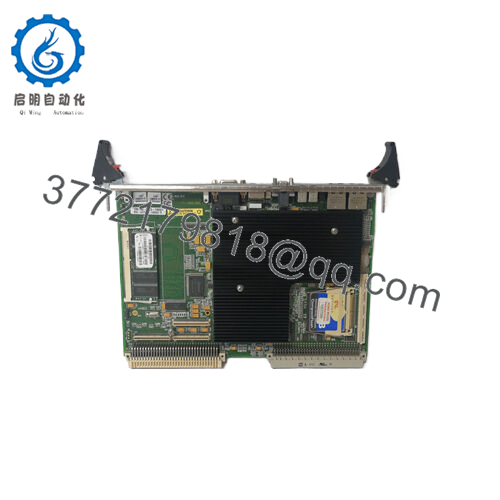
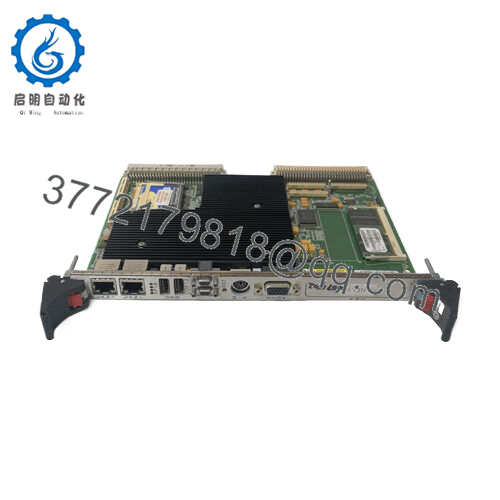
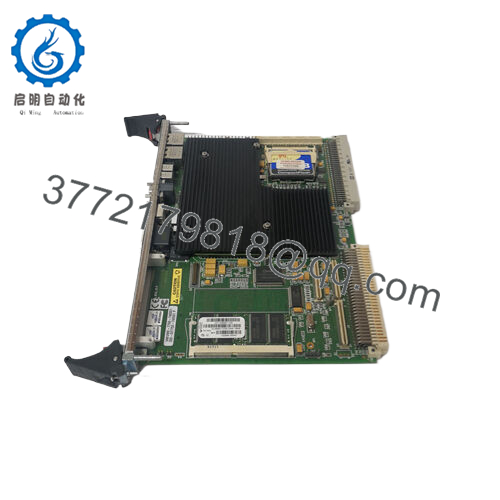
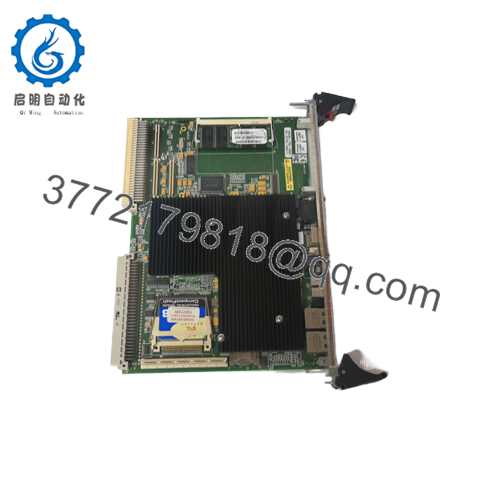
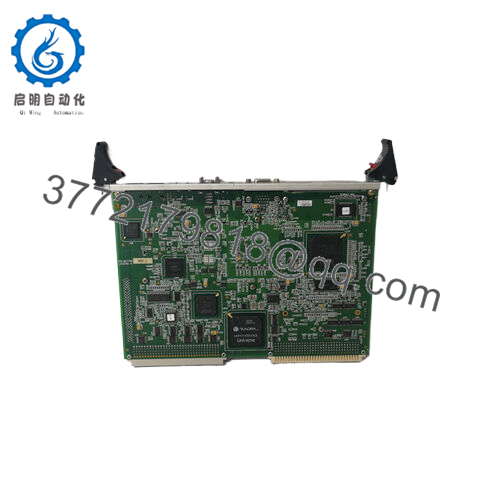
 WhatsApp: +86 16626708626
WhatsApp: +86 16626708626 Email:
Email:  Phone: +86 16626708626
Phone: +86 16626708626
